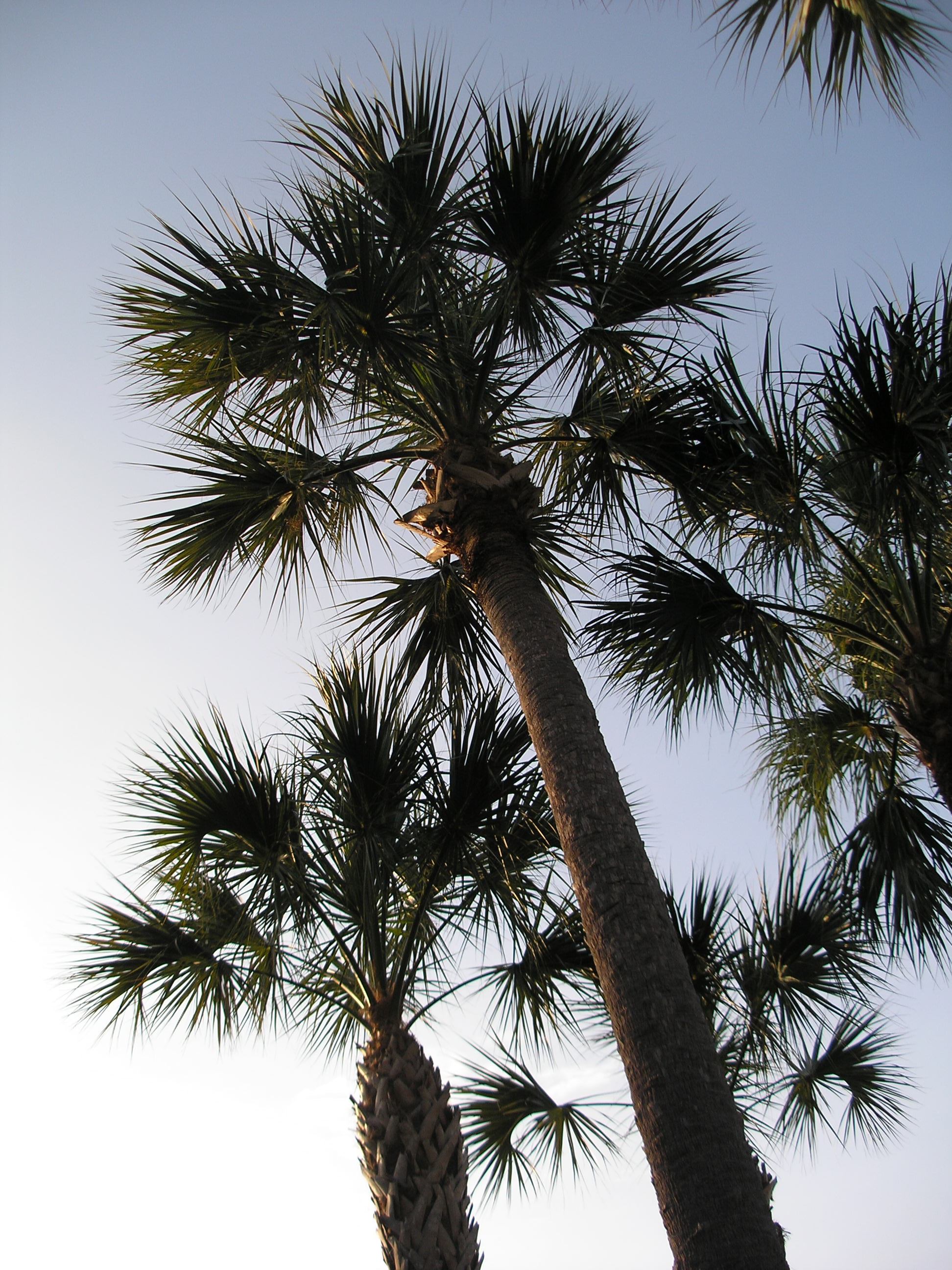- Sabal palmetto
taxobox
name = "Sabal palmetto"
image_caption = "Sabal palmetto" grove inMyrtle Beach, South Carolina
status = LC
regnum =Plantae
unranked_divisio =Angiosperms
unranked_classis =Monocots
unranked_ordo =Commelinids
ordo =Arecales
familia =Arecaceae
genus = "Sabal "
species = "S. palmetto"
binomial = "Sabal palmetto"
binomial_authority = (Walt. )Lodd. |"Sabal palmetto", also known as Cabbage Palm, Palmetto, Cabbage Palmetto,Palmetto Palm, and Sabal Palm, is one of 15 species of palmetto palm (Arecaceae, genus "Sabal"). It is native to the southeastern
United States ,Cuba , and theBahamas . In the United States it occurs throughoutFlorida and coastal areas of Georgia,South Carolina ,Mississippi ,Alabama , andNorth Carolina . Although historically reported fromCape Hatteras , North Carolina, this population has long been extirpated. It is the state tree of South Carolina and Florida. This palm has been cultivated in theNorfolk, VA area and theAtlanta, GA area too."Sabal palmetto" grows up to 65 ft (20 m) in height, with a trunk up to 2 ft (60 cm) diameter. It is a fan palm (Arecaceae tribe Corypheae), with the leaves with a bare petiole terminating in a rounded fan of numerous leaflets. Each leaf is 5 to 6.5 ft (1.5-2 m) long, with 40-60 leaflets up to 2.6 ft (80 cm) long. The
flower s are yellowish-white, .20 in (5 mm) across, produced in large compound panicles up to 8.2 ft (2.5 m) long, extending out beyond the leaves. Thefruit is a blackdrupe about a half inch (1 cm) long containing a single seed. It is extremely salt-tolerant and is often seen growing near theAtlantic Ocean coast. For a palm tree, Sabal palmetto is very cold-hardy--it is commonly accepted that the Sabal palm is able to survive relatively short periods of temperatures as low as 7 °F (-14 °C). However, it has also been reported to survive temperatures much lower.Cultivation and uses
"Sabal palmetto" is popular in cultivation for its tolerance of salt spray and cold. It is the state tree of
South Carolina andFlorida . Most references rate the species as hardy toUSDA hardiness zone 8a without protection, although with protection, proper siting, and care it can be grown in zone 7. The growing heart of the new fronds, also known as the terminal bud, gives the tree its "cabbage" name, since this is extracted as a food and superficially resembles acabbage head in shape and tastes like anartichoke . It is what is referred to in aHeart of palm salad. This was commonly eaten by Native Americans. However, this practice is very destructive as it will kill the palm, because the terminal bud is the only point from which the palm can grow and without this bud the palm will not be able to replace old leaves and will eventually die.References
*Zona, S. 1990. A monograph of "Sabal" (Arecaceae: Coryphoideae). "Aliso" 12: 583-666.
External links
* [http://www.efloras.org/florataxon.aspx?flora_id=1&taxon_id=200027118 Flora of North America: "Sabal palmetto"]
* [http://www.floridata.com/ref/S/sab_palm.cfm "Sabal palmetto"] from [http://www.floridata.com Floridata]
* [http://www.na.fs.fed.us/pubs/silvics_manual/volume_2/sabal/palmetto.htm US Forest Service Silvics Manual: "Sabal palmetto"]
Wikimedia Foundation. 2010.
